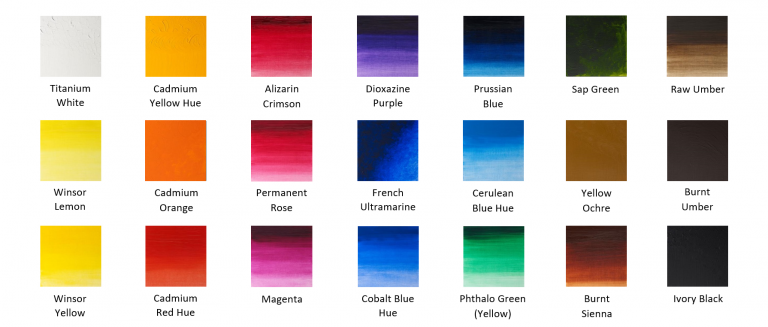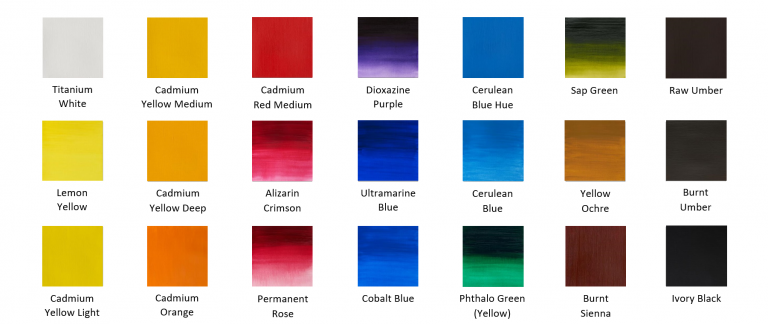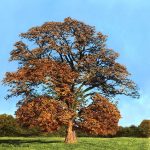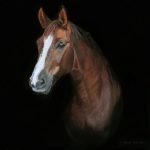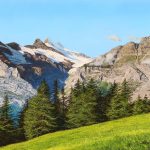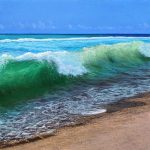If you’re new to oil painting or thinking about signing-up to my Online Art School, you’ll need a range of equipment to get started. You don’t need to spend a fortune on oil painting supplies but I do advise you to buy artist grade oil paint instead of student grade, as you really will notice the difference in results.
Below, you will see a list of basic oil painting equipment that you’ll need to start oil painting or to join my Online Art school. It’s not necessary to purchase the exact same equipment as me to start oil painting or to take part in my oil painting courses. However, I do recommend that you purchase the highest quality equipment that you can afford, as you’ll be happier with the quality and be able to produce better paintings.
- Oil paints
- Palette
- Paint brushes
- Artist panels (and primer if required)
- Easel
- Liquin or Linseed oil to thin the oil paint
- White spirit to clean paint brushes and thin paint
- Varnish to finish your work of art
As a beginner, it’s likely that you’ll have very limited knowledge about oil painting and the equipment that you’ll need. But it’s very easy to pick it up quickly and to start enjoying learning how to oil paint. My Online Art School specialises in teaching oil painting for beginners with step-by-step tuition, so you’ll be in very good hands.
I’ve put together a beginner’s guide to starting oil painting below, which answers some of the most commonly asked questions. As you start to improve and try new oil painting techniques, you may want to increase your range of paints and brushes to help you achieve more advanced results.
What paints do you need to start oil painting?
It’s possible to start painting in oils with only a very limited palette of red, blue, yellow, Titanium White and Burnt Umber. By using different quantities and variations of each of these oil paints, you can mix almost any colour that you require. However, if you want to use the same paints that I use during my oil painting lessons, you will need my full colour palette which consists of 21 colours.
Traditional oil paints, wonderful as they are, take a very long time to dry. That’s why I use Winsor and Newton Griffin Alkyds after the block-in layer. They dry much more quickly, and this means an oil painting can be completed in a single session. They also have a slightly greater level of transparency for increased depth and clarity when glazing.
I start my oil paintings by blocking-in with acrylic paints. This is because they dry much faster than oil paints and allow me to continue with the rest of the painting more quickly. Whether you choose to block-in using acrylics or oils is completely your choice, it does not have any effect on the painting itself. My acrylic paint palette can also be purchased from Winsor & Newton.
What can you use as a palette for oil painting?
To make it easier to mix your oil paints and load up your brush, you’ll need a palette. Any smooth surface that has an even colour will work well for oil painting. Over the years I’ve used plywood, glass and cardboard and even paper in varying colours, and they’ve all been more than adequate. Winsor and Newton make a good product that I’ve used many times, a tear-off pad of 50 disposable vegetable parchment palettes, impervious to oil, acrylic or alkyd colour.
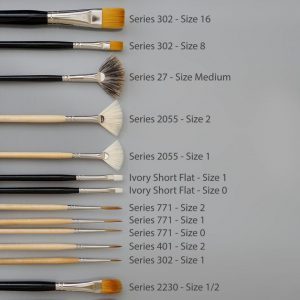 What are the best paint brushes for oil painting?
What are the best paint brushes for oil painting?
There are many different paint brushes available for oil painting, and you’ll probably want to experiment with a few to find the best ones for you. I have developed my own set of oil painting brushes with Rosemary & Co, that consists of 16 brushes in a range of different brush types and sizes. This paint brush set is ideal for beginners and advanced artists alike, as it gives you the variety and quality that you’ll need to paint with oils.
The Michael James Smith set of brushes are made by Rosemary & Co. and are available to purchase from their website Rosemary and Co.
What type of surface can you paint onto with oils?
You can paint onto most smooth surfaces with oil paints, such as moisture-resistant MDF or canvas panels. I use Ampersand’s Artist Panels, which come primed with an ultra-smooth acid free acrylic gesso primer. These are great because you can start your oil painting straight away. If you’re joining my Online Art School, my oil painting lessons are mostly based on 12” x 12” panels.
Preparing canvas and artist panels for oil painting
Most surfaces will need to be primed before they are suitable for painting on, unless you’re using Ampersand’s Artist Panels. When using MDF panels, I use Dulux matt emulsion paint to prime the surface, however, any acrylic primer can be used. I apply two coats, and sand after each coat to ensure that it is smooth.
How to choose an easel for oil painting
There are many different models and styles of easels, but I would suggest that you look for an easel that is very sturdy and allows your oil painting to stand upright. The last thing you want is for your easel to be unsteady and ruin all the hard work that you’ve put in. I use the Mabef M18 Convertible Studio Easel.
How do you thin oil paint?
Liquin is designed to thin oil paint and aid in the speed at which the paint dries, making it excellent for use in oil painting. I always start my oil paintings by blocking the painting in with acrylic paints. After, I often use Winsor & Newton Liquin Original as a glaze over the top and then start to add details using oil paints. However, any medium that is suitable for oil paint can be used for this technique, such as turpentine or Linseed oil. Be aware that both of these will make the paint film dry slower than Liquin.
How do you remove oil paint from paint brushes?
White spirit is ideal for removing acrylic or oil paint from your paint brushes. Simply swirl your brush around in a jar filled with white spirit and wipe it on paper towel until no more paint comes off.
White spirit can also be used to thin your oil paint when you want to add finer details to the later layers of a painting. Paint that has been thinned with white spirit creates sharper edges, which is helpful in foreground areas of your oil painting. This thinned paint will also allow you to add new paint on top of a wet (or slightly tacky) undercoat without disturbing it.
How do you finish an oil painting?
Once you’ve finished your oil painting, it’s important to add a protective layer of varnish to protect the paint film. You’ll also find that applying varnish to your finished oil painting will make the colours appear more vibrant, as some oil colours do have a tendency to dry looking dull.
I prefer to use a gloss picture varnish by Jacksons, which can be purchased here. I feel that gloss varnish brings out the details of the painting better than ordinary varnish. Whichever brand you choose to use, it is advisable to use artist quality materials for better results.
Learn how to varnish an oil painting here
As you start to improve and try new oil painting techniques, you may want to increase your range of paints and brushes to help you achieve more advanced results. If you do feel at all intimidated by the range of oil painting equipment required, don’t worry. Just start out with the basics and once you begin painting with oils I’m sure you’ll really enjoy it, just as much as me.
If you’d like to start learning how to paint with oils today and join over 1000 budding artists from around the world, head over to my Online Art School. You’ll gain access to a wide range of beginner oil painting lessons, all with easy, step-by-step video guidance.


